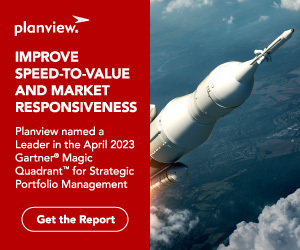 The September-October 2013 issue of Research Technology Management Journal includes a case study on portfolio management written by our own Dan Smith and yours truly: “From Budget-Based to Strategy-Based Portfolio Management: A Six-Year Case Study”. In it, we describe the journey of a life sciences company as it transitioned from a conservative, somewhat disordered investment process to one that was in better alignment with the long-term growth aspirations of the firm.
The September-October 2013 issue of Research Technology Management Journal includes a case study on portfolio management written by our own Dan Smith and yours truly: “From Budget-Based to Strategy-Based Portfolio Management: A Six-Year Case Study”. In it, we describe the journey of a life sciences company as it transitioned from a conservative, somewhat disordered investment process to one that was in better alignment with the long-term growth aspirations of the firm.
You might be saying “Six years to a better process? That seems an awfully long road.” The plain truth is that effective portfolio management doesn’t happen overnight, especially in mature companies. Portfolio management involves a diverse set of stakeholders across the firm, and therefore everyone involved in R&D spending must be engaged in the process overhaul, from project champions to the head of R&D and the CFO. Bringing transparency to the discussions of each project’s value will threaten project teams unaccustomed to justifying their funding to management. At the same time, management may be unaccustomed to basing, and explaining the rationale for, funding decisions in the context of information gathered through the portfolio process. So, the barriers to overnight success in portfolio management are largely organizational, rather than technological or scientific.
The good news is that benefits of implementing even a few portfolio management best-practices accrue almost immediately. The key to long-term success is to build stakeholder consensus around a clear but cautious road map for improving your portfolio management process. Each step should bring more rigor to the process, while conferring tangible benefits to both management and product teams. Be careful not to add too much sophistication to valuation or portfolio analyses in any one portfolio cycle. One team we worked with never showed more than two novel analyses to management in a portfolio review. This slow-but-steady process improvement mindset helped all involved stay focused on the funding decisions rather than drowning in methodologies or fancy visualizations. It also ensured that management had sufficient time to learn about and assess the value of new analyses brought to each review.




